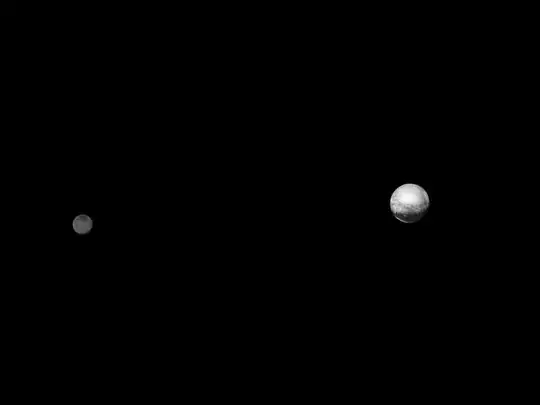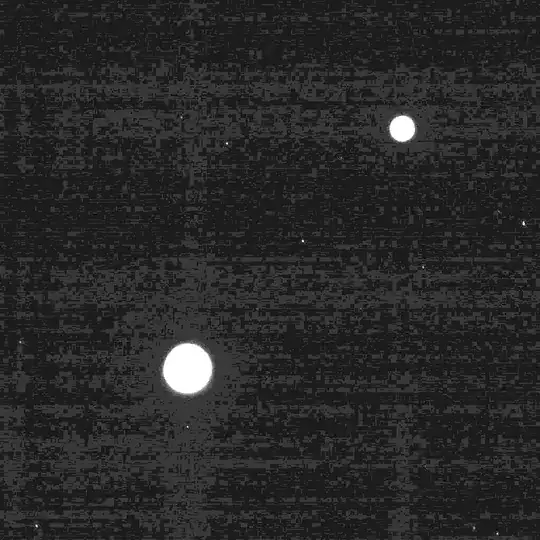You can look up the camera settings behind these images. Here is the link to one of the raw images. The exposure time of the camera was 100ms. New Horizon's LORRI camera is a Ritchey-Chrétien telescope with a 20.8 cm diameter primary mirror and a focal length of 263 cm. That gives us approx. f12.6, which is a rather long i.e. fairly slow optical system (but typical for an astronomical instrument). The CCD in this camera probably makes somewhat up for that by being a little more sensitive than the average digital camera chip (that's maybe worth 1-2 f-stops). It's also a panchromatic camera (science-speak for black-and-white), which buys us another couple of f-stops in sensitivity over a CCD with built in RGB-filter, so that we are roughly dealing with the equivalent of an f8.0 or so consumer camera.
Now you can get your digital camera, set it to some reasonable gain (i.e. ISO 400) where the readout noise isn't dominant, yet, and take a picture of the night sky at f8.0 and 1/10th of a second exposure. Are you going to see stars? Probably not.
I did take a couple pictures of the full Moon the other night. The ideal setting was ISO100, f/6.5 and 1/200th second. No stars... for those I have to use ISO1600, f/4.5 and 30 seconds, i.e. conditions which gather a thousand times more light and which amplify the signal electronically to get the dimmer stars to show up somewhat. If I wanted a (fake) image with Moon and stars I would have to photoshop the two together. That is exactly how all the pretty Hollywood movies do their astro-shots: it's image manipulation and cgi.

